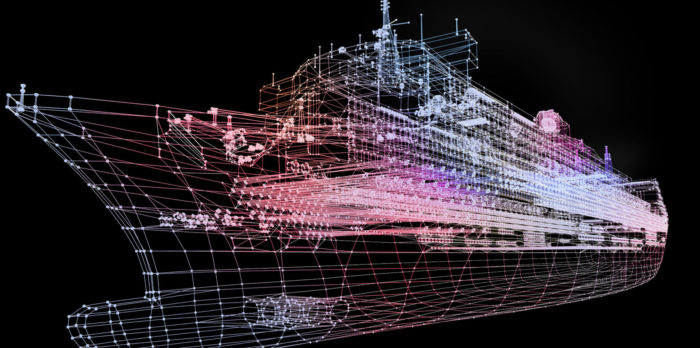During the 2019 SMART4SEA Conference, Dr. Panos Theodossopoulos, CEO, Propulsion Analytics, presented, together with WinGD, a real time Engine Diagnostic System (EDS) available in all WinGD 2-stroke, diesel and dual fuel engines.
The core principle of the technology employed in EDS is the concept of the digital copy of the physical engine. That’s what we call the ‘digital twin’, a term that is also becoming quite trendy in the maritime industry. The digital twin onboard helps us assess the performance of the physical engine.
The parts of the solution are the physical engine generating signals during operation, which are fed to the analysis layer, finally yielding support for the onboard crew in terms of trouble shooting, maintenance, and spare parts.
The first step in the process is the analysis of the signals coming out of built-in sensors of the engine. Data, both slow as well as high frequency signals, are fed into the analysis every single minute. We go through three stages of analysis:
- Thermodynamic analysis
- Engine subsystem diagnostics based on expert know-how, and
- Machine learning, where applicable.
Initially, the thermodynamic digital model of the engine is working in parallel to the physical engine and based on the differences of the signals from the physical engine to the corresponding parameters given by the digital twin for the exact conditions, we can assess performance and diagnose possible issues. The model for each engine -is customized for each onboard installation, using exact geometry, engine settings, controls and Shop test results to create the “Digital Twin”.
The second part of the analysis is what we call subsystem diagnostics. We’ve broken down the engine in components, as per below and we analyze each one based on know-how of the engine designers’ experts.
- Servo oil system
- Fuel injection system
- Piston running
- Scavenge air and exhaust gas system
- Engine control & automation system
- Gas admission system (for dual fuel engines)
That allows us to look at details. Once an issue is detected it actually gives an alarm on the onboard screen to the crew and the crew can dive in and look at details.
Finally, once we start collecting operational data, we’re also training machine learning algorithms, which are then applied to detect abnormal operation.
This typically involves two steps:
- Step 1: Use historical data & expert’s knowledge to train the Machine Learning algorithm.
- Step 2: Apply the trained algorithm to predict future events
Once all the above steps are completed, one has to consolidate the outcomes of the three stages of analysis and orchestrate the actions to follow, namely troubleshooting, planning of maintenance tasks/events and handling of spare parts. This is the tangible value to the onboard crew.
Troubleshooting is more or less one expects. It provides the list of possible causes based on the finding and presents a set of corrective actions to the onboard crew through digital access to operation and maintenance manuals.
With respect to maintenance, the current practices dictate that overhauling and maintenance events are based on the running hours of the component. We’re extending that approach in order to take into account the condition and the status of the asset. This in principle allows the operator to extend or advance overhauling and maintenance events.
Finally, the ‘Spare Parts’ module concludes the process, through an automatic creation of the relevant spare part list for each maintenance task identified, relevant drawings and a full version of the spare part code book in a digital form.
Above text is an edited version of Mr. Panos Theodossopoulos’ presentation during the 2019 SMART4SEA Conference.
View his presentation herebelow
The views presented hereabove are only those of the author and not necessarily those of SAFETY4SEA and are for information sharing and discussion purposes only.
About Panos Theodossopoulos, PhD, CEO, Propulsion Analytics
 Panos is a Founding Partner & the CEO of Propulsion Analytics. He has held several management positions in Sales, Business Development, Services and Marketing, in the ICT sector, both in Greece and abroad. He has served as Director of Public Sector Sales and Director of Technology at Microsoft Hellas, where he worked for eight years and, more recently, he was General Manager of the Cloud Division of SingularLogic and Country Manager in Logicom Solutions in Greece. He holds a M.Sc. in Mechanical Engineering from Tufts University, Boston, and a Ph.D. in Mechanical Engineering from Imperial College, London.
Panos is a Founding Partner & the CEO of Propulsion Analytics. He has held several management positions in Sales, Business Development, Services and Marketing, in the ICT sector, both in Greece and abroad. He has served as Director of Public Sector Sales and Director of Technology at Microsoft Hellas, where he worked for eight years and, more recently, he was General Manager of the Cloud Division of SingularLogic and Country Manager in Logicom Solutions in Greece. He holds a M.Sc. in Mechanical Engineering from Tufts University, Boston, and a Ph.D. in Mechanical Engineering from Imperial College, London.




























































